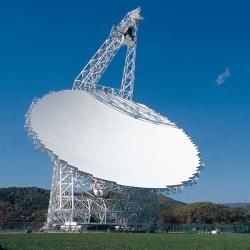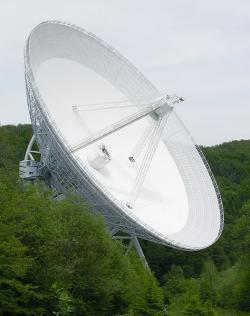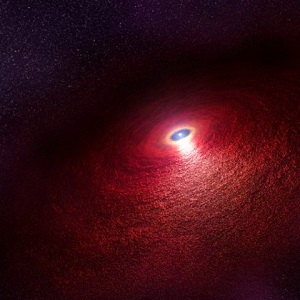Scientists have scanned two nearby neutron stars in a hunt for dark matter
Artistic representation of neutron star RX J0806.4-4123. Credit: NASA, ESA, and N. Tr’Ehnl (Pennsylvania State University).
–
It is hardly possible to imagine a nicer gift for astrophysicists and the whole of science as such than the discovery of new particles that could explain the persistent mystery of dark matter. Unfortunately, it seems that even this year there will be only coal under the tree of dark matter. But that doesn’t mean scientists haven’t tried. The hunt for dark matter continues, despite the pandemic and all sorts of adversities.
Astrophysicists come up with admirable tricks to get a scalp of dark matter. Research by Joshua W. Foster of the University of Michigan, Ann Arbor, certainly belongs to this category. As the original title of their publication says very nicely, they searched for dark matter in the glow of neutron stars. They scanned them for one type of dark matter candidate – the axions.

The legendary Green Bank telescope. Credit: NRAO / AUI / NSF.
–
If the dark matter is formed by particles, then they should not be visible. They should act on their surroundings practically only by gravity. Of course, finding something like this is very difficult. All the more so when no one knows exactly what such a particle should look like. Therefore, many candidates for dark matter particles, often very exotic, emerged. It is a diverse family, from super-heavy gravitins, through sterile neutrinos and dark photons, to WIMPs (weakly interacting massive particles). Each of these candidates has relatively unique characteristics.
Axions are one of the promising ones. If they exist, they should be light, electrically neutral, and should flow through space in waves. Unlike many other candidates for dark matter, axions are unique in that they should occasionally interact with ordinary matter not only by gravity but also by electromagnetism.

Effelsberg 100-m Radio Telescope. Kredit: Dr. Schorsch / Wikimedia Commons.
–
Axions usually look for terrestrial experiments. But scientists sometimes exchange the exotically luminous environment of laboratories for the starry sky. They use remarkable natural experiments prepared for us by the universe itself. In this case, Foster’s team used neutron stars, which for astrophysicists are something like compact laboratories of extreme physics. They also used another prediction about axions, according to which axions in strong electromagnetic fields should occasionally transform spontaneously into photons, which, on the contrary, are relatively easy to detect.
Neural stars have extremely strong magnetic fields. Their massive gravity could also attract a large number of axions. That’s why Foster’s team considers neutron stars to be an ideal place to search for axions. There should be an conversion of axions to photons, which would be reflected in a very narrow peak of radio waves at a certain frequency, which would depend on the mass of the axions.
Researchers analyzed data from two radio telescopes, the American Robert C. Byrd Green Bank Telescope and the German Effelsberg 100-m Telescope. The telescopes scanned the two nearby neutron stars RX J0720.4-3125 and RX J0806.4-4123 in detail, and also scanned the center of the Milky Way, where there were an estimated 500 million neutron stars. They focused on frequencies around 1 GHz, which corresponds to axions weighing 5 to 11 microelectronvolts.
They found nothing. But that doesn’t mean their research is useless. They essentially ruled out the existence of axions of these masses. With more and more similar experiments, whether on Earth or in the “space laboratory”, the resulting picture is gradually composed. He will give us the answer to the question of whether dark matter is formed by axions.
Literature
Kavli Institute for the Physics and Mathematics of the Universe 18. 12. 2020.
Physical Review Letters 125: 171301.
– .


